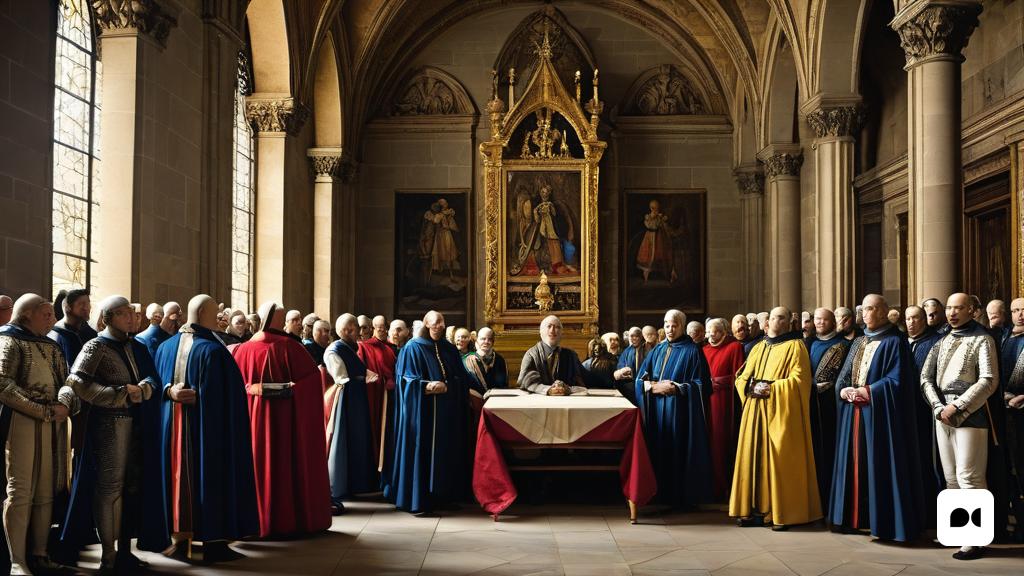A historical moment
On the same day as today in the year 1410, 614 years ago, in the Saló del Tinell of the Royal Palace of Barcelona, preparations were being made for the legitimation ceremony of Frederic d’Aragó-Rizzari, natural son and only male descendant of deceased Martí el Jove (heir to the throne, died prematurely the previous year) and King Martí I, called ‘the Human’. Even before the unexpected disappearance of Martí the Younger, who died without legitimate offspring during the Sardinian campaign (1409), King Martí I—who did not trust the reproductive mission entrusted to his son—had ordered the little Frederic at court (1407), give him training to govern the Crown and prepare its legitimation.
A life marked by legitimacy
Little Frederic (1402) was the result of an extramarital relationship between Martí el Jove (at that time, married to his first wife, Maria of Sicily) and the Palermo noblewoman Tarsia Rizzari. During the first years (1402-1407), his life had passed at the court of the Catalan-Sicilian kings in Palermo, but in 1407 he was claimed by Martin I and was torn from his mother’s side, who was not given allowed him to travel to Barcelona and settle in the Catalan court with his son. The chancellery of Barcelona was obsessively legitimist and the Catalan-Aragonese throne was the only one in medieval Europe that had never been occupied by a king of illegitimate origin or a descendant of illegitimate parents.
A complex process
For this reason, Martí I had to deploy an enormous and cumbersome legal argument, which had to culminate with the protocol ceremony of legitimation and the acceptance of the new heir by the different courts that made up the Catalan and Aragonese political edifice. When everything was ready, the day before, on May 31, King Martí I died unexpectedly and mysteriously. And the schismatic pontiff Benedict XIII—Pope Luna, protected by Martí I—and who had to collaborate in the task of drawing up the argument for Frederic’s legitimation, withdrew suspiciously. However, throughout the day there was hope that some event would occur that would allow the ceremony to go ahead.
A mysterious ending
Martí I died, officially, because of the chakras he was dragging. He was an obese man and of a relatively advanced age for the time (54 years old). But from the first moment, mystery hovered over that death. Romantic Catalan historiography had seen the hand of the supporters of Ferran de Trastàmara (the late king’s nephew, who would end up wearing the crown). But modern research (21st century) does not indicate such a clear authorship. Frederic’s legitimation harmed both Ferran de Trastàmara and Jaume d’Urgell. They were the two most well-placed candidates, and the subsequent affiliation of Papa Luna to Ferran’s party would only obey the defense of his personal interests (the guarantee of the perpetuation of this protection).

